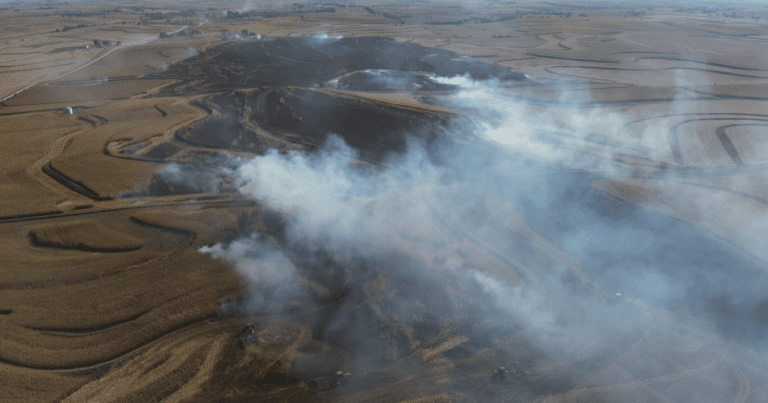A large farm fire recently brought firefighters and a dozen farmers together to fight the blaze near Emerson in southwest Iowa.
Brian Hamman, emergency management director for nearby Montgomery County, estimates the fire has burned up to 300 acres.
“It's so dry, all it takes is strong wind and a spark and it goes out,” Hamman said.
The drought is fueling concerns about wildfire danger across the Midwest. Dennis Todey, director of the U.S. Department of Agriculture's Midwest Climate Hub, said that while grass fires are not unusual for the Plains states, fire danger follows drought.
“Minnesota, Iowa, Missouri, Wisconsin and parts of Illinois are usually wet enough that there's usually just an in-field risk,” he said. “However, there is a bigger problem because of the ongoing drought conditions and the severity of the drought.”
Todey, who is based in Ames, Iowa, said there are always problems when farmers head into the fields to harvest, but now there is a real risk of wildfires spreading.
“If something starts and it's not dealt with quickly, you know, it could be a potential problem. In windy conditions, fires can move very quickly in dry vegetation,” he said.
The National Weather Service, state climatologists and extension service staff members meet regularly, according to Todey. He said they are trying send the message to the farmers and the general public, about the risks.
“… be aware, react quickly and be ready to deal with it if something happens,” he said.

Map: US Drought Monitor
In Iowa, 16 of the state's 99 counties have burn bans. To try to prevent any problems during harvest, Iowa Fire Marshal Dan Wood said farmers should keep their tractors and combines maintained and as clean as possible.
“Sometimes field debris falls in places it shouldn't and that causes a fire.”
It also warns residents to be extra careful when building fires outdoors and to have a fire extinguisher or water hose nearby.
Duane Friend, University of Illinois Extension climate specialist, also stresses the importance of farmers keeping chaff and dust off equipment and checking daily for oil leaks. He adds that people should not light fires on windy days.
He said he expects wildfire danger to remain high late into the fall due to continued dry conditions and the long-term outlook for above-average temperatures.
“Hopefully strong winds won't play a part in this, which would greatly increase the risk.”
Todey agrees that fire danger will likely continue into November unless areas that are dry get significant rainfall.
“We would need significant rain. We're still warm enough that the greens could still green up a little and that would be helpful,” he said. “Wetter conditions around would certainly be helpful.”

